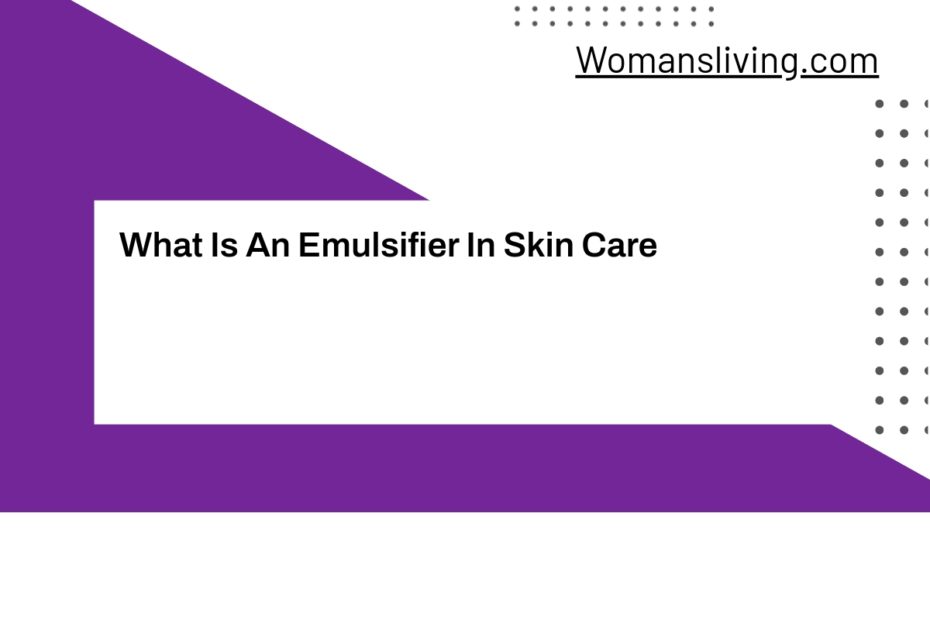What is an Emulsifier in Skin Care?
Emulsifiers are ingredients that are used to mix and stabilize other ingredients. They can wash out the protective lipids in your skin, leaving your face and body feeling dry and irritated. Common emulsifiers include Sodium Lauryl Sulfate, Benzalkonium Chloride, and Behentrimonium Methosulfate.
They are also common in shampoos and conditioners. Emulsifiers are further subdivided into three types based on their electrical charges.
In skincare, an emulsifier is used to combine ingredients that have different properties including water and oil. Typically, a non-ionic emulsifier has an HLB (Hydrophile Lipophile Balance) while a polar one has a higher number. Another natural emulsifiers are Lecithin which is derived from phospholipids.
It can be animal or plant-derived and is used for major formulations. These two are the best known but may not be safe for you to use.
What exactly is an emulsion, you ask?
There is not an equivalent product in Western beauty for emulsions. J-Beauty’s and K-Beauty have their skincare products. A milky, gel-like moisturizer is an emulsion. Emulsions can be thought of as lighter versions of moisturizing creams because they are water-based.
Emulsions are lighter than traditional creams or face oils that can feel heavy and greasy because of their semi-liquid consistency. Emulsions are often found in J-Beauty products.
What should you do with emulsions?
An emulsion will be most effective if it is used in the correct order. It’s not a good idea to overuse an emulsion but proper product layering is important due to differences in the molecular sizes of products. You should apply your emulsion after you have applied the moisturizer. You can also use the emulsion in place of your cream and essence toner. In Japan, many people use both creams and emulsions in their winter skincare regimen. If you have combination skin you might want to use the emulsion on all of your face and then apply cream to some areas. Use your fingertips to warm the remaining emulsion. Next, gently rub it into your neck and face in an upward motion.
The Benefits and Drawbacks of Emulsifiers
It is possible to create cosmetic formulations without much knowledge of the ingredients. It is important to understand the properties and limitations of each ingredient before you add it. This will help you decide whether the addition is necessary.
Would it add an advantage to the final product? It could also help to design the product to meet desired requirements, below is a table that outlines the benefits and limitations of cosmetic emulsifiers.
They are physically inelastic and can be separated into distinct phases. Emulsifiers help solids disperse in liquids or insoluble liquids with other liquids. Dispersed oil drops can fusion and rise in an oil-in-water (o/w) or water-in-oil (w/o) solution. Greasy anhydrous creams may be made washable.
The dispersed phase can be separated and fused permanently. It is possible to observe the conversion of water-in-oil (w/o), into oil-in-water (o/w), or vice versa.
Different skin types can use emulsions
AHC Skincare (@ahc.global) shared this post. Emulsions are suitable for all skin types however, they work well on oily or acne-prone skin. It absorbs quickly, providing instant hydration however, people with combination skin or dry skin may also benefit from using emulsions.
Emulsions that target specific skin conditions such as blemishes, excess sebum production, or combination skin types can be used. It can be applied to specific areas of your face.
For example, a combination of acne-prone skin can use an oily emulsion around their T-zone. Normal skin can choose a simple emulsion that is rich in Hyaluronic acids. This will give your skin radiance. If you have sensitive skin, it is important to do a patch test before applying.
You should always do a patch test before applying any serum-containing niacinamide. Subscribe to our channel at @indianexpress and keep up with all the headlines.
